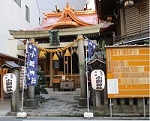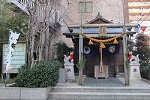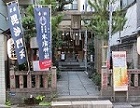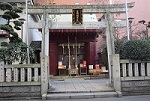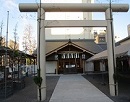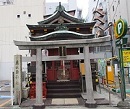I went to a public bath.
I was soaked in Yuzuyu during the winter solstice and wanted to post the situation on my blog.
This winter solstice (22nd) was a weekday and I didn't leave it to me.
Since the regular holiday is Sunday and public holidays, the plan will be implemented on Saturday 26th.
There are 11 public bathhouses in Chuo-ku.
It is far from the view image of Chuo-ku, which is lined with commercial facilities, off-is buildings, and condominiums.
I am surprised that the public bath culture remains more than I imagined.
From among them, we aimed for "Konparuyu".
Being in Ginza, Hana. Founded in 1863 (Bunkyu 3) and has been continuing since the Edo period.
This was the decisive factor for my choice.
8-7-5, Ginza, Chuo-ku.
From JR Shimbashi Station, put towels and facial cleansers in a tote bag and hang around for about 5 minutes.
From Chuo-dori, which faces Hakuhinkan, is near the Imperial Palace, Kinharu Street.
Near the entrance of the street, there is a signboard for the "Kinharu Yashiki Ruins", which is the origin of the name.
In addition, the "Ginza Kinharu-dori Brick remain Monument," which conveys the history of brick streets lost in the Great Kanto Earthquake.
It's set up.
This place is the stage of the Noh Kinharu Festival, a street Noh held on August 7 every year.
There are also high-class sushi restaurants that are popular among them.
The sign of "Kinharuyu" and the large goodwill are hung, so you will be able to get there without hesitation.
Put your shoes in the shoebox and remove the wooden underfoot.
On the wall, there is a certificate of "2015, excellent sanitation facility award-winning shop".
Joint name of Chuo-ku Environmental Sanitation Association and public health center. This is an important thing.
Check the men's bath sign and go inside.
There was a stand. I can't see the other side.
Adults (12 years old or older) will pay 460 yen. Elementary school students 180 yen. 80 yen for preschoolers.
The dressing room has a high ceiling and a large fan of coffered ceiling.
This is the taste of a different space.
The locker is large and can store suits and training supplies depending on the location.
When you open the front door, you can see the magnificent red Fuji Penki picture.
After all, speaking of a public bath, it is a mountain of Fuji that draws a wide hem.
You can see the paint picture next to you on the high partition.
Mount Fuji is against the backdrop of the clear sky that embraces the sea and pine forests and sways clouds.
You can enjoy two different beautys.
Nakajima and the signature are written in the picture, and the public bath artist Morio Nakajima's
You can see that it is a work.
There are 16 karans and 16 fixed showers in the washing area.
Although it is small, the color based on white accentuates the cleanliness.
And the tile picture of red and white carp.
Many customers, come early. Ginza, the city of love. A lot of words are spoken.
Each public bath has a user's style and implicit rules that have been passed down.
Here, when you use your own tubs and chairs in the washroom and return to the dressing room.
I think I'll keep it again.
The washing area is always organized and it is a sign to use it widely.
The yellow plastic tub is made quite durable.
"Tetsu Momo" in red at the bottom. A few decades ago, "Kerolin" was the mainstream.
It was HUDSON's advertising tub for that game.
Rinse-in shampoo and body soap were provided, so bring a towel.
I think it's okay to visit. (Towels are also sold.)
Well, what is the right answer to the locker's key?
If you hang it on your right wrist, you will hear a rattle when you wash your hair.
If you look around it, if you want to attach it to your ankle, you will see the style of hanging on your left wrist.
It seems to be the most common.
A relatively vacant time zone at 16:30 on Saturday.
Soak in a bathtub at 43.3°C and feel paradise.
The dryer cost 20 yen for 3 minutes.
There were a few people who really left the store in a suit.
And conclude with bottled milk, coffee milk, or fruit milk.
No. I didn't handle it.
There are vending machines for beverages in the entrance passage.
So buy it to moisten your throat and wait for sweat on the bench.
The lady sitting next to me. After the bath, it feels good like Takuro's "Travel Inn".
"News of New Year's Holidays" was posted.
"Dec. 31 (Thursday) From 14:00 to 20:00
January 1 (holiday) Morning bath from 9:00 to 12:00
We will be closed from January 2nd (Sat) to 4th (Mon).
We will operate normally from January 5th (Tuesday)."
(Normal business hours are from 14:00 to 22:00.)
On New Year's Day, the "morning bath" in a public bath on the way home from new year worshipping may be a wonderful early year event.
 On the outbound route, start in front of the Yomiuri Shimbun headquarters in Otemachi, go straight south on Hibiya Street in Chiyoda-ku, but the last 10th ward on January 3 runs in Chuo-ku.
On the outbound route, start in front of the Yomiuri Shimbun headquarters in Otemachi, go straight south on Hibiya Street in Chiyoda-ku, but the last 10th ward on January 3 runs in Chuo-ku.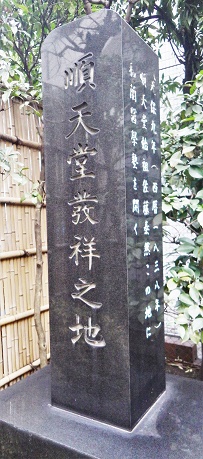
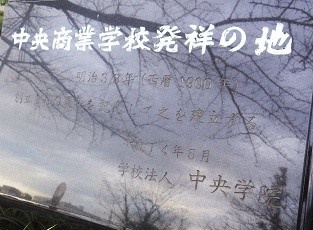
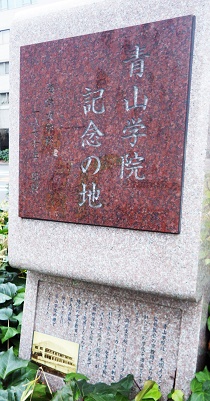
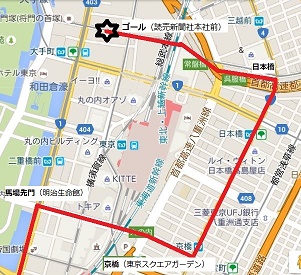
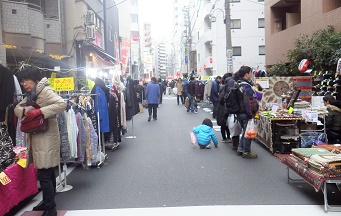 Of course, this is the first time that you have come to Yagenbori's year-end market, but you
Of course, this is the first time that you have come to Yagenbori's year-end market, but you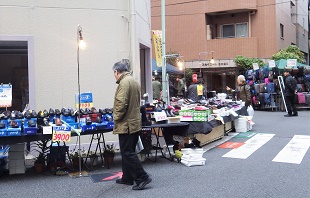


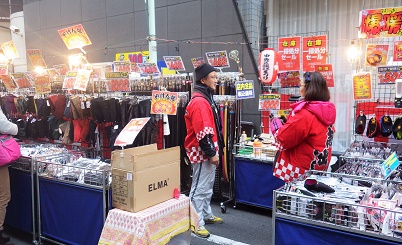
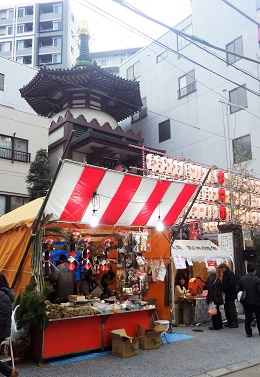
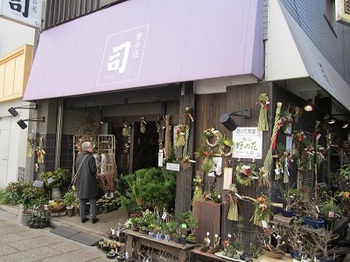
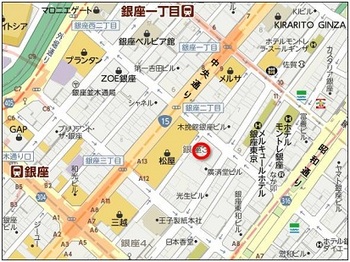
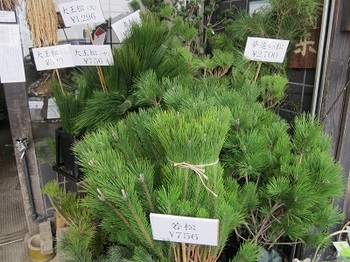
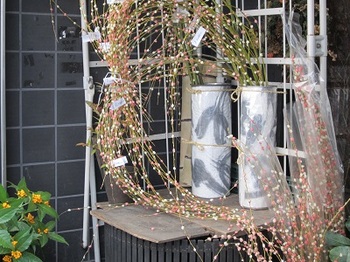
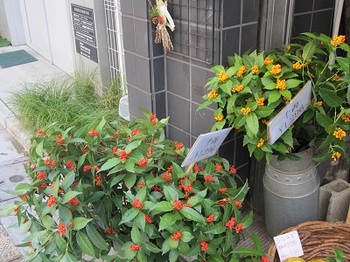
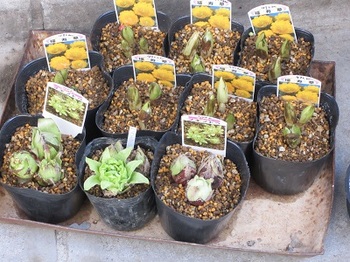
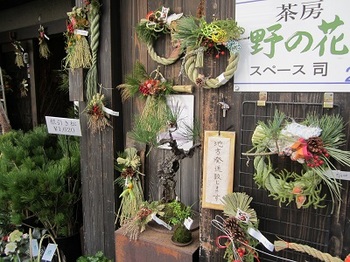
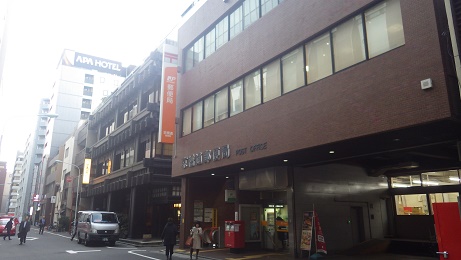
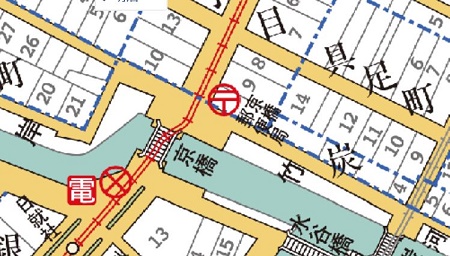
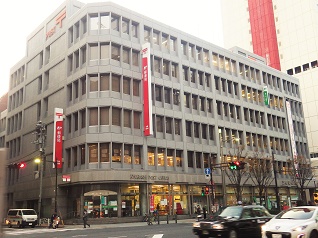 [Kyobashi Post Office along Harumi-dori St.]
[Kyobashi Post Office along Harumi-dori St.]

